Paving the way for a NY Fashion District: American style, production and distribution align over American fashion
Beginnings
Menswear
The American clothing industry was born in the early 1800s for menswear. Up until this point, menswear was produced by tailors, for those whom could afford it, or at home as womenswear would continue to be produced for at least another half-century.
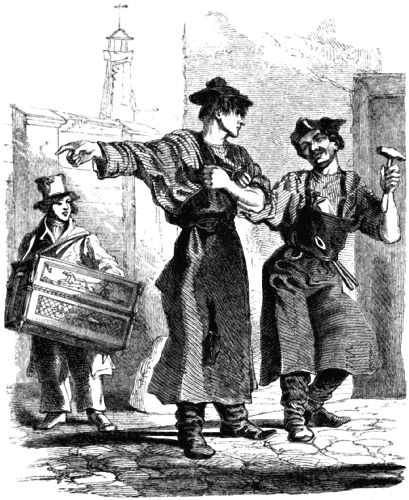
Around this time, tailoring businesses in the Northeast (NYC, Boston and Philly) began to produce and sell inexpensive ready-to-wear clothing to sailors on leave. These clothes were called slops, and were indicative of poverty or bad taste to the rest of society, but they provided a starting point from which the ready-to-wear market grew. The industry would further expand through the production of service and army uniforms.
In the early 1850s, a mass market of middle-class consumers emerged with industrialization. Brooks Brothers was among the first companies to serve this market, having begun in 1818 as a tailor-shop and growing to 75 tailors and 1,500 manufacturing employees by 1857.

The mid-19th century "gold rush" had an even greater effect on the US fashion system. Mr. Levi-Strauss realized that the gold prospectors would need tents, and ordered a special resilient fabric from France to serve this market demand. The fabric was called serge de Nîmes (serge, from the French city Nîmes), which we now know as denim. In addition to using this fabric for tents, Levi-Strauss recognized that it could easily be transformed into utilitarian work trousers. American jeans were thereby born, and the development of the US fashion manufacturing system was well underway.
Alongside the invention of the sewing machine for industrial use by Isaac Singer, the US manufacturing industry was fully supplied with a growing immigrant labor force. However, the real key to success in this mixture was the alignment of distribution with production. Department stores and specialty stores began to focus more retail space and marketing efforts towards clothing. This alignment allowed the US fashion industry to move beyond workwear and menswear through superior production methods integrated with distribution, and a strong market orientation.
Even today, the US model for the fashion business is centered around vertical chains (meaning that they produce what they sell, like the GAP), department stores (although they are growing weak in the current economy), and a continued solid market orientation.
Womenswear
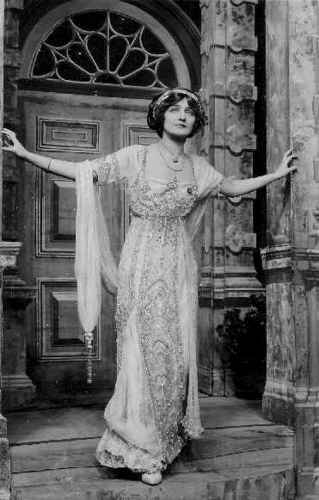
Many early-American women made their own clothes at home or locally, as thrift was a strong post-colonial value along with the patriotic challenge to the dominance of English/European taste. However, in the time of prosperity following the Civil War there was borne an interest in Parisian couture, and many American-made items were viewed as unsophisticated. While some could afford imports from France, most were American copies inspired by French fashion, yet they carried French labels to reassure their clientele (much like Italian labels are often used in the Chinese market today for Chinese-produced goods). The shadowing of Parisian style would continue well into the 1900s, the market demand of which fueled the growth of the American fashion industry.
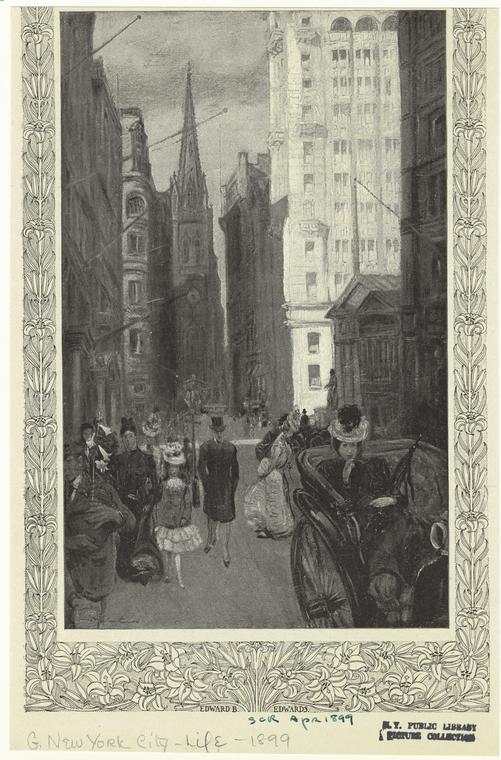
In the late 19th century, the concentration of transportation systems, manufacturing facilities, immigrant workers and skilled tailors in New York allowed for the rapid development of a concentrated fashion production region. In fact, New York had already become the capitol of ready-to-wear production by 1900, but by 1925, 78% of the fashion produced in Manhattan was in womenswear! The isolation of Europe from the United States during WW1 allowed for the American style to flourish. By the interwar years, the increasing trade of US ready-to-wear and growing consumer confidence in the "correctness" of the American way of life worked to solidify confidence in the American style.
WW2 went further to isolate the Parisian fashion capitol from the rest of the world, accelerating the idea of American sportswear and encouraging the isolationist attitude of the fashionable American woman, who increasingly viewed European fashion with suspicion rather than envy. By the mid-20th century, New York had become the fashion focus of the American woman, and the starkly functional and smart product style would remain the legacy of US fashion.
New York: Fashion Capitol, USA
The story of the development of NYC into one of the world's leading fashion producers is pretty long and complex, so I've taken another tip from Dan Roam and sketched it out for the sake of brevity!
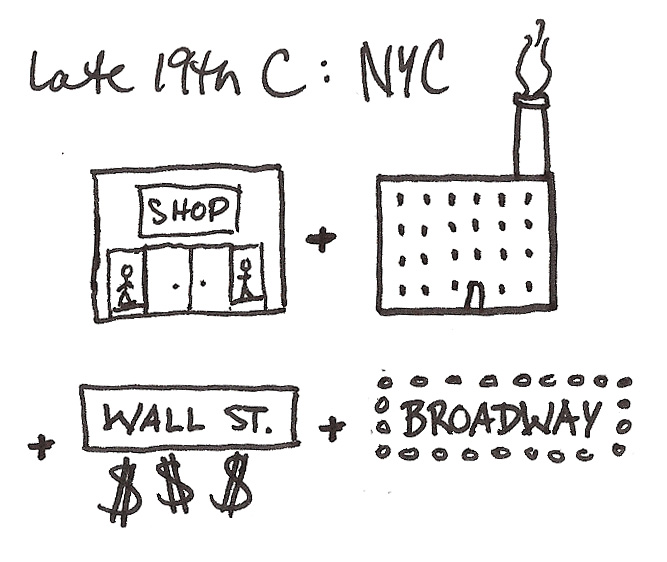
Paving the way for a NY Fashion District: pre-existing commercial and manufacturing facilities, along with fashionable aspirations and a less conservative attitude than other US cities.
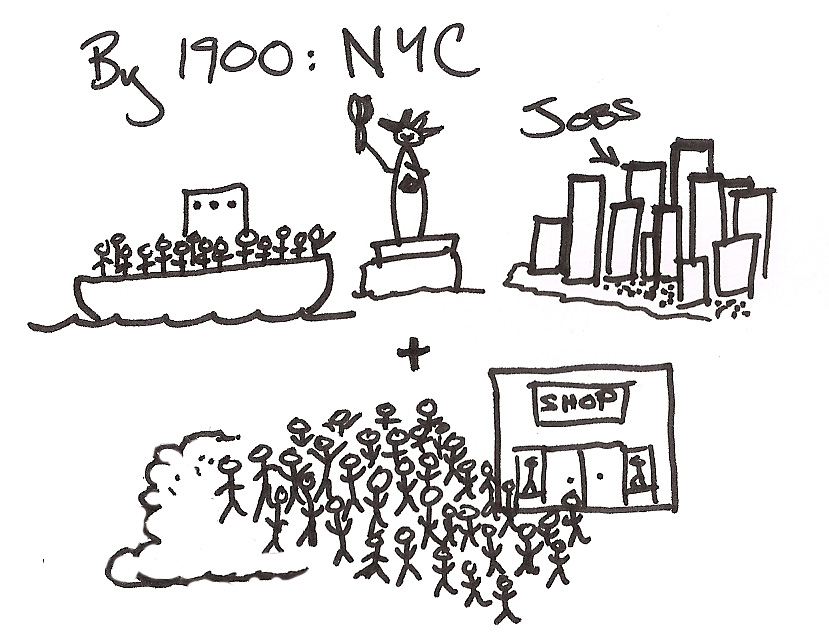
Growing the NY ready-to-wear industry: huge immigrant labor pool & commercial demand
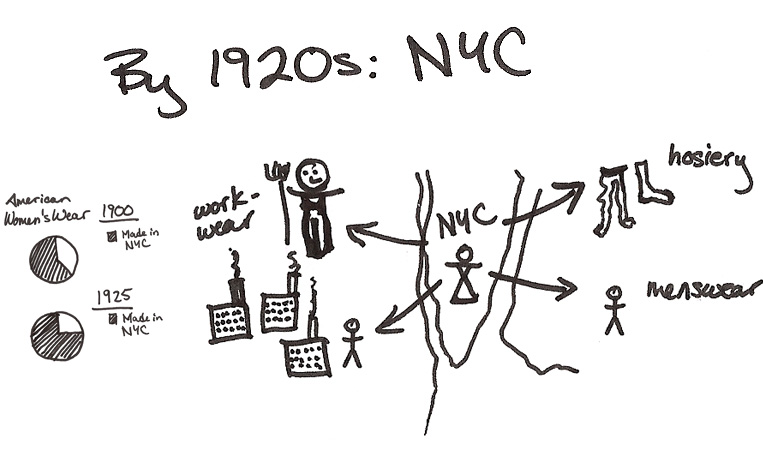
Regional growth & womenswear localization: centralizing women's fashion, outsourcing other production to suburbs

Challenging the leader: a second production region emerges around Hollywood, fueled by the film industry and a new wave of Eastern immigrants
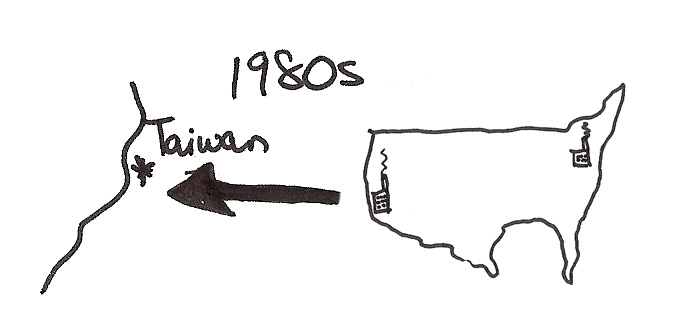
Challenging domestic production: companies begin widespread outsourcing of production to Taiwan and the Pacific
Why New York?
In spite of the 200+ years of clothing production evolution in the US, and several challenges posed by outsourcing for cheaper labor supplies, New York has remained the fashion capitol. How did it come to assume this position? Much like the fashion regions that would later develop around production in Italy, within New York an entire community of design, production, distribution, commerce and marketing existed (and much of it exists today). There are several groups that contributed to this phenomenon, among them:
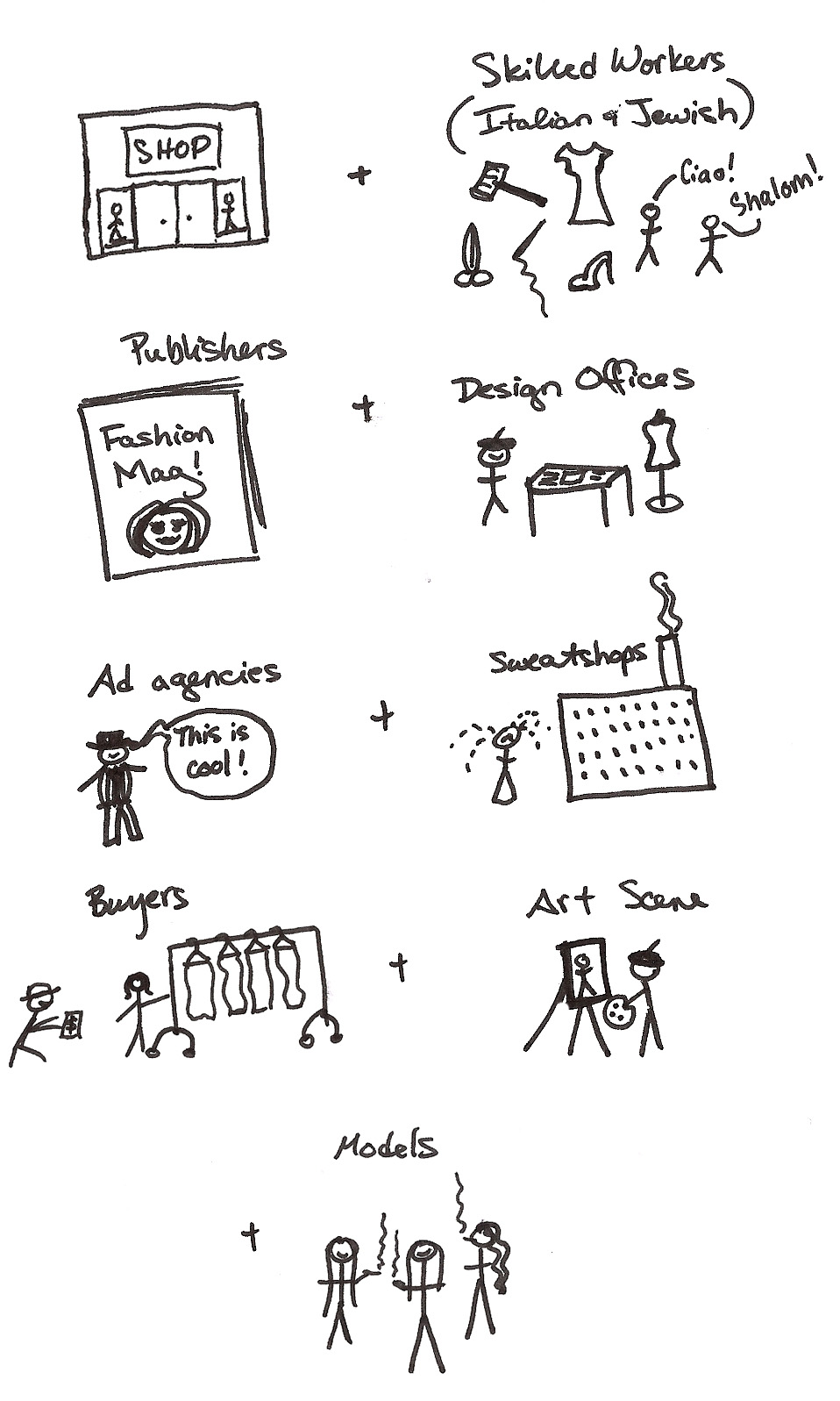
While the sweatshops have luckily vanished from New York, they still remain the curse of the ready-to-wear industry, having simply been moved to developing countries. In fact, the compact total-system for fashion that is found in New York has led to the global trend in "fast fashion," which demands cheap labor for rapid production and affordable prices. Put simply:

However, as "fast fashion" begins to slow down after years of increasing velocity (because, frankly, we are all getting sick of having our clothing be made obsolete as soon as we bring it home- where's the real value?), consumers are seeking more ethical alternatives to sweatshop-produced goods.
As New York has been at the heart of this movement and has led the way in both fashion marketing and production systems (whether domestic or outsourced), it seems likely that the movement towards ethical fashion will be centered from the market-driven capitol of NYC.
American Fashion Values
These same "values" and themes remain common to the American fashion system:
- Comfortability/Casual
- Sportswear & Jeans
- Practicality/Utility
- Sophisticated-Preppy
- Value for Money
- Clean Lines/Ethnically Neutral
- Apply Glamor to Basics
- Use Sport Motifs for Marketing
UPDATE!
Here is an incredible multimedia glimpse at the history of 20th Century American Fashion History from FIT.
Sources include: personal notes,Fashion, by Christopher Breward & Strategic Management in the Fashion Companies, by S. Saviolo & S. Testa